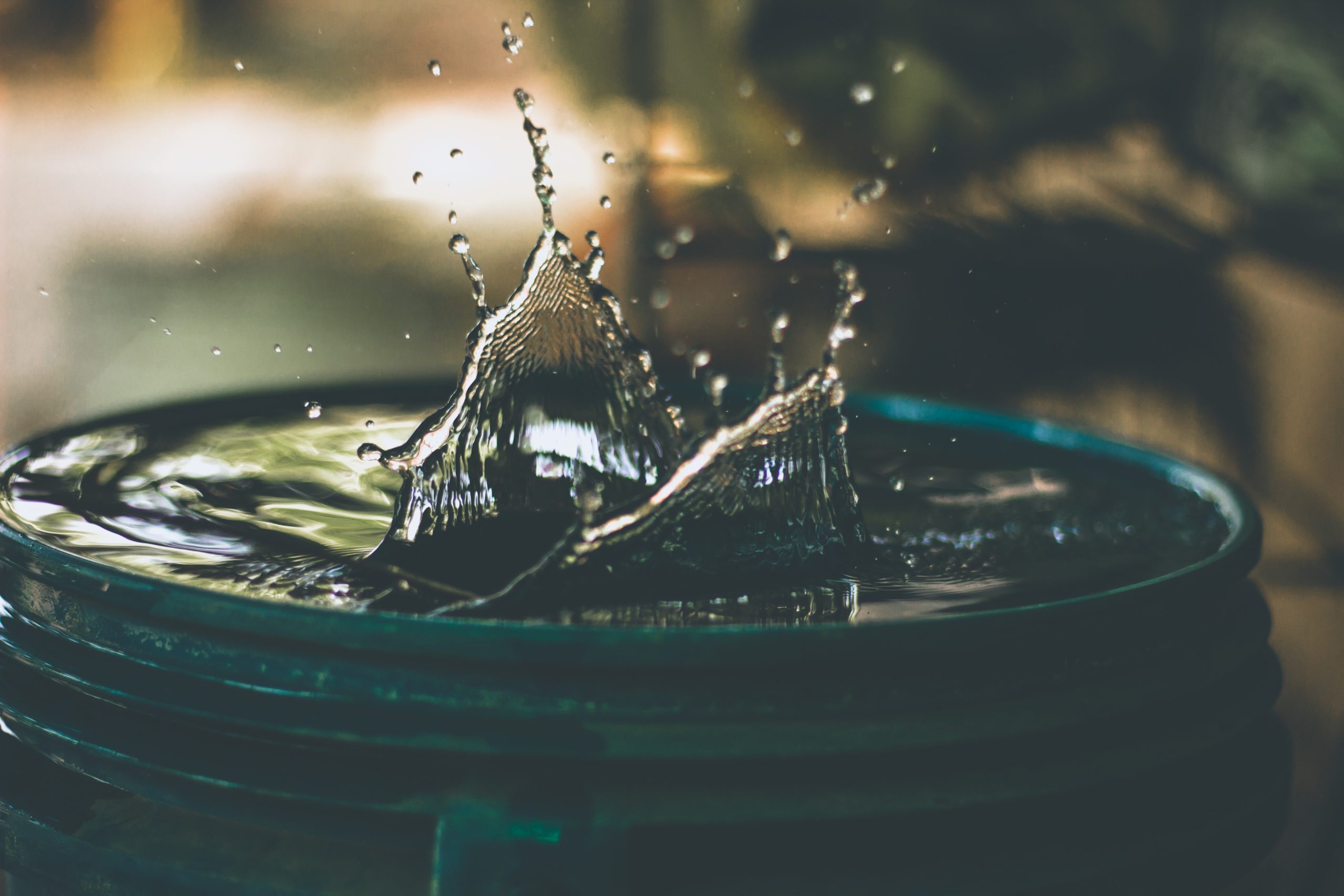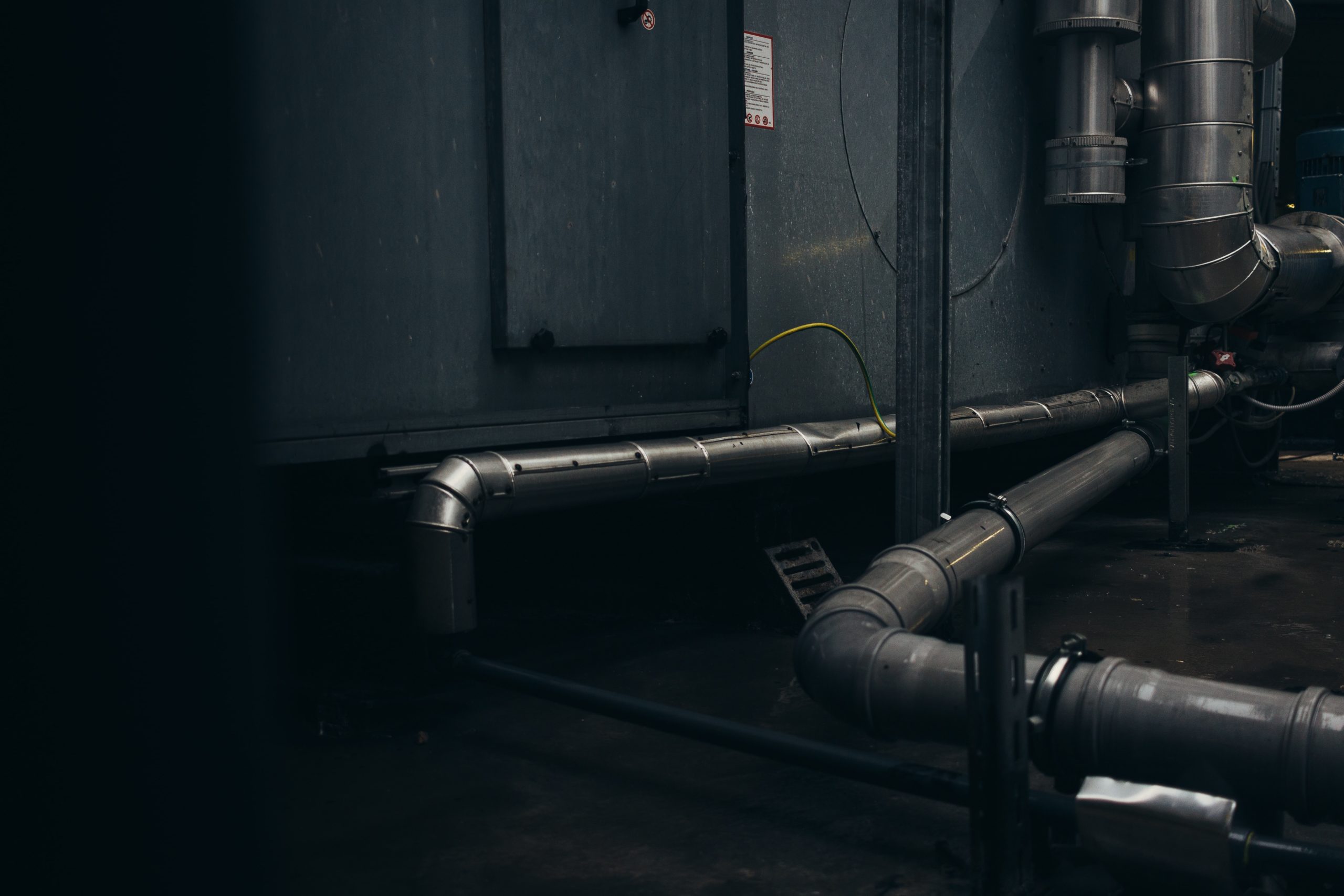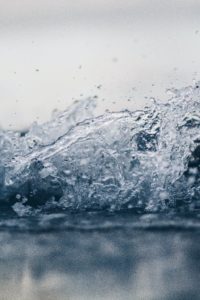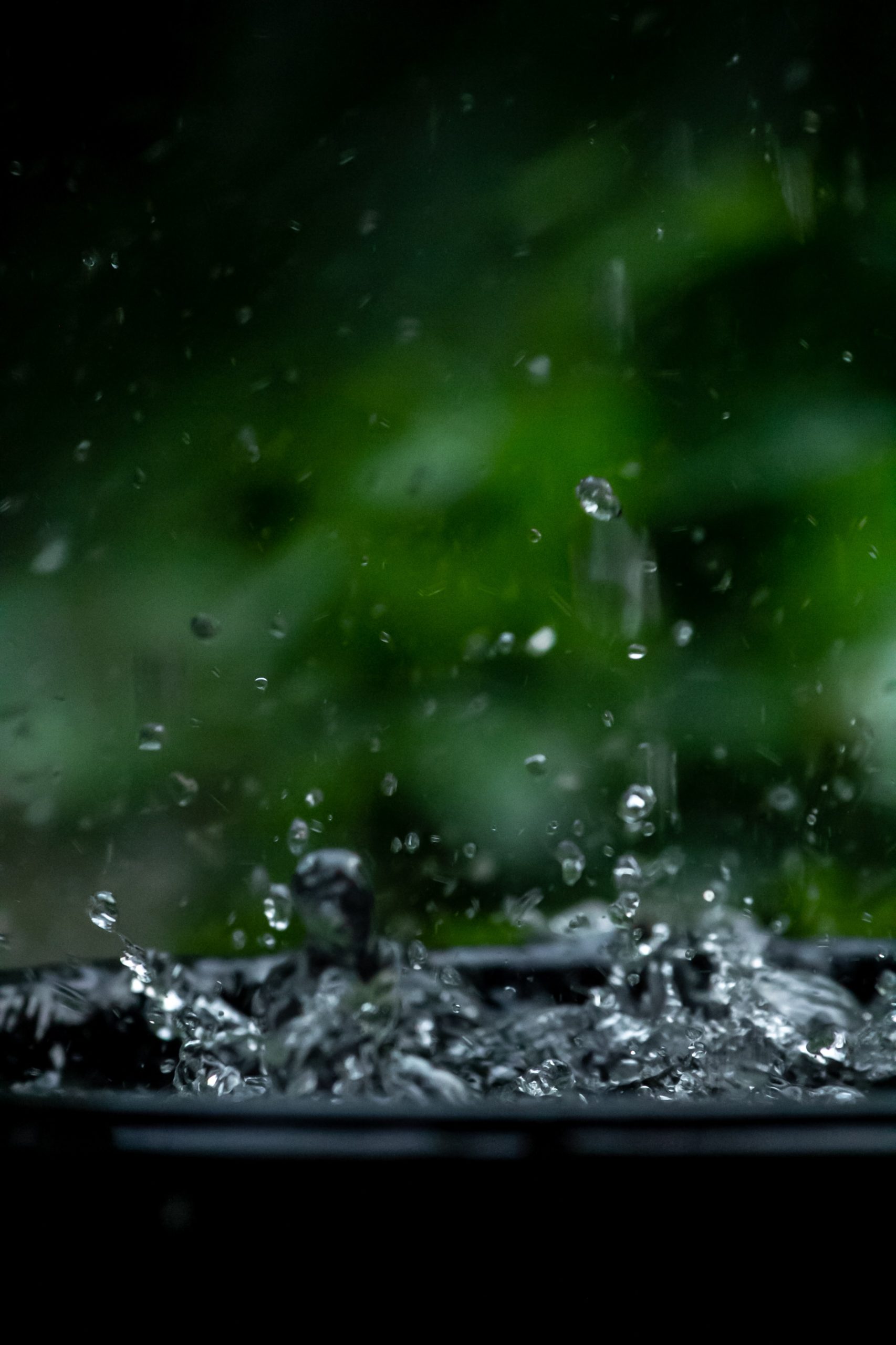Why is it important?
Access to clean and fresh water is threatened by global warming, but also by uncontrolled and unequal use among users. 3.6 billion people have insufficient access to water (at least one month per year), and by 2050 this number is expected to exceed 5 billion. (1) According to the Intergovernmental Panel on Climate Change (IPCC) (2), climate change will have a significant impact on the supply of freshwater for consumption. Drought, reduced aquifer recharge, and degradation of raw water quality are just some of the challenges we face today that will become even more relevant in the coming decades.
Sustainable management of rainwater resources can be an effective way to combat the effects of climate change by increasing the resilience of societies and ecosystems and reducing the carbon footprint. In many regions, people already depend on rainfall due to lack of surface water, as is the case in Africa, where 90% of agriculture is predominantly rain-fed. (3)
For humanitarian organisations, rainwater harvesting represents a good opportunity to improve their access to water and resilience, while supporting local populations, especially those living in water-stressed areas. Installing rainwater harvesting systems in schools, hospitals or even for domestic use can provide real support to the most vulnerable people, leaving no one behind.
Rainwater harvesting is a simple, time-proven, and low-cost solution to water scarcity and climate adaptation. It provides continuous and limited access to water by reducing the stress on groundwater and rivers in areas facing water scarcity. (4) This technique is particularly useful in areas where rainfall is not uniform to build resilience and ensure water supply during dry periods. (5) In the urban environment, the implementation of a rainwater harvesting system can provide a triple benefit (6): reduction of water infrastructure costs in the urban system, reduction in household water expenditure, and reduction in the cost of stormwater management.
What is the solution?
Rainwater harvesting refers to the collection and storage of rain rather than allowing it to run off. Rainwater is collected from a roof-like surface and redirected to a tank in order to provide water for human, animal, or crop use.
Unlike large-scale water systems such as pipelines, reservoirs or dams, rainwater harvesting techniques can be implemented at the building level, by small communities, organisations or even individuals. (11) It is a powerful tool for an organisation wishing to secure water access to its infrastructures and increase its resilience, particularly in regions experiencing drought, where water is very far away, available in limited quantities or highly polluted.
An organisation can use harvested water for a variety of purposes: outdoor uses such as gardening or car washing, flushing toilets, and washing floors, laundry, professional and industrial uses, domestic sanitary water for hygiene (sinks and showers), and drinking water. In addition, water collection and storage can be used for agricultural purposes and aquifer recharge.
Rainwater is often unsafe to drink. If the collected water is to be used for personal hygiene or drinking water, it should always be tested and treated when contaminated. To reduce risk, cost, and operational complexity, it is recommended that water be used in the order presented above: first for outdoor use (if applicable), and as a last resort for drinking water.
Depending on the situation and the needs, it may be wise to install a double sewerage system – rain and drinking water – to supply the toilets, the washing of the floors and the external uses on the one hand, and hygiene and drinking on the other.
Point of attention
-
Point of attention
Rainwater is an important source of freshwater but is frequently contaminated by air pollution and becomes unsafe for drinking when that is the case. Rainwater is salt-free which means that it can easily be used for irrigation purposes without damaging plants and roots (which filtrate the water). However, atmospheric pollution due to high industrial and agricultural activities or traffic and contamination of surfaces are major issues as they contaminate the rainwater and make it unsuitable for drinking. Consequently, in many cities around the world, rainwater should not be used for drinking without prior treatment. Additionally, especially in tropical and subtropical areas, storage tanks can provide a habitat for harmful vector diseases, bacteria, microorganisms, and algae. Therefore, rainwater must be tested and treated before drinking it where relevant. Several treatment techniques can be implemented: such as sand and gravel filtration, chlorination, UV, or boiling water in combination with a filter, the last one remaining one of the easiest and yet very effective purification methods. (12)

How much water could be collected?
-
How much water could be collected?
- The amount of water that could be captured by rainwater harvesting systems is quite high:
- 60,000 litres of water could be accumulated per year in a flat terrace of 100 m2 in an area with a rainfall of 600 mm. Even in low-precipitation areas with 200 mm annual rainfall, about 12,000 litres of rainwater could be harvested. (13)
- In Switzerland, toilets consume around 8000 litres of water per person, 3700 litres for washing machine. Averaged precipitation is 1230 mm, and 600 to 1000 litres can be collected per m2 of roof per year. (14)
- 3 case studies in Nigeria (15):
- In a hospital, the installation of a 12 m3 tank can satisfy 78.1% of the water demand.
- In a residence, the installation of a 4m3 tank can satisfy 70.6% of the water demand.
- In an office, the installation of a 10 m3 tank can satisfy 75% of the water demand.
- In Australia, in urban areas, rainwater harvesting systems provide 177 billion litres annually, or 9% of residential water worth $540 million; outside these areas, rainwater provides 63% of water, or 109 billion litres. (16)
- The amount of water that could be captured by rainwater harvesting systems is quite high:
Key actions
-
#1 Assess the situation, the needs and the systems
Answering the following questions will help analyse the local situation and possibilities: How much water is currently used by the facility? What are its uses (outdoor, toilet, hygiene, drinking)? Which rainwater harvesting system could be installed and where (roof)? How much water could be harvested (depending on rainfall data and systems chosen)? Is it necessary to install additional systems (dual potable/non-potable water systems, decontamination kit)? What are the related risks, costs, savings, and points of attention?
-
#2 Install water harvesting systems
Choose water harvesting systems adapted to the needs, infrastructure context, available space, and maintenance capacities. Ensure that these systems will be sustainable in the long term.
-
#3 Train the right people
Train the individuals who will oversee operating and using the systems. Set up an information and training program for newcomers.
-
#4 Clean and maintain systems
Rainwater harvesting systems must be cleaned and maintained regularly, including the removal of filter rejects. Its frequency depends on the purposes of the water collected (e.g.: outdoor use or drinking water). The installation must be checked every 6 months, looking in particular at the cleanliness of the equipment, the extraction points, and the proper functioning of the disconnection system. Filters should be cleaned, the storage tank should be emptied, cleaned and disinfected, and valves and taps should be checked on an annual basis.
-
#5 Inform users
Be transparent and inform end-users of the stakes (water stress, savings, opportunities) and installation of rainwater harvesting systems, its advantages, and limitations.

To consider
-
Potential co-benefits
-
Success conditions
- Operator training
- Cleaning and maintenance of installations
-
Prerequisites & specificities
- Need for certain technical features on the space used: sloping roof, space for the tank next to the roof, and electricity for the pump (19)
- For hygiene and drinking water: rainwater must be tested and treated where contaminated
-
Potential risks
- Water contamination, especially through storage tanks if poorly maintained (vectors of disease and algae growth)
Tools and good practices
-
Rainwater harvesting systems technical brief, Water Aid UK, 2013
A technical guideline for the implementation of a rainwater harvesting system. It outlines the system's advantages and disadvantages, operational mechanics, and provides guidance on sizing storage tanks for application.
Read here -
National guidelines for rainwater harvesting systems, UNDP Lebanon, 2018
This document provides comprehensive guidelines, along with technical and commercial information, for sizing and implementing rainwater harvesting systems in both rural and urban environments. Primarily focused on domestic applications and external uses, such as those in residential units, schools, hospitals, and other facilities requiring water for domestic purposes.
Read here -
Rainwater harvesting systems: A practical guide, Clean Water Gear
This guideline presents what rainwater harvesting is, the different techniques involved, its stages from collection to usage, the encountered challenges, and associated pricing.
Read here -
Care and maintenance of rainwater tanks, Rainwater Harvesting Australia, 2020
This document illustrates the operation and maintenance procedures of a collection tank, highlighting its benefits. Additionally, it addresses common tank malfunctions and provides guidance on diagnosing and resolving issues independently.
Read here -
Rainwater harvest calculator
This calculator assists in determining the necessary size of a storage tank based on factors such as rainfall, roof area, roof type, and family size.
Read here -
Rainwater harvesting for schools, FAO, 2012
The Technology and Practices for Smallholder Agriculture (TECA) FAO platform provides information and case studies regarding field-tested practices and technologies in various aspects of rainwater harvesting.
Read here
To go further
-
Webinar – How to improve resilience and address water scarcity through innovative solutions?
Watch the replay of our webinar on innovative solutions in the field of water access. Maria Giovanna Di Bitonto talked about her research on fog collectors, which extract water from humid air masses, while Sébastien Mercier and Carola Bänziger presented the Gravit’eau system for washing hands with recycled water.
Watch the replay here -
Rainwater water harvesting techniques, MIT
This document outlines global challenges, demonstrates how rainwater harvesting can mitigate rainfall deficits in certain regions, and its role in effectively addressing climate change. It also discusses various implementation methods, operational mechanisms, benefits, and challenges associated with the system.
Read here -
The International Rainwater Harvesting Coalition (IRHA)
IRHA is a Swiss-based non-governmental organization advocating for rainwater as a sustainable remedy to water scarcity and natural disasters that threaten ecosystems and communities. Their efforts focus on implementing rainwater management projects in developing nations where access to clean water and susceptibility to climate change significantly affect the lives of thousands.
Read here -
Rainwater for drinking in Vietnam: barriers and strategies, International Water Association Publishing, 2019
This paper reviews rainwater for drinking demonstration projects in specific areas of Vietnam, identifying technical, economic, and social barriers. It further suggests strategies to overcome these challenges.
Read here
Water

Sources
(1) WMO, State of Global Water Resources 2021. Read here.
(2) E. Renault, J. Pillot, and A. Vacelete, Reduction of water losses from drinking water distribution networks. 2020. In French. Read here.
(3) O. Lade, D. Oloke, Modelling of a rainwater harvesting system: Case studies of university college hospital, residential apartment and office block in Ibadan city, Nigeria. 2020. Read here.
(4) MIT, Rainwater Harvesting. Read here.
(5) United Nations, Water and Climate Change. Read here.
(6) Rainwater Harvesting Australia. Visit their website here.
(7) O. Lade, D. Oloke, Modelling of a rainwater harvesting system: Case studies of university college hospital, residential apartment and office block in Ibadan city, Nigeria. 2020. Read here.
(8) MIT, Rainwater Harvesting. Read here.
(9) Rainwater Harvesting Australia. Visit their website here.
(10) WMO, State of Global Water Resources 2021. Read here.
(11) MIT, Rainwater Harvesting. Read here.
(12) MIT, Rainwater Harvesting. Read here.
(13) MIT, Rainwater Harvesting. Read here.
(14) La Maison Nature, Water management: Rainwater harvesting. In French. Read here.
(15) O. Lade, D. Oloke, Modelling of a rainwater harvesting system: Case studies of university college hospital, residential apartment and office block in Ibadan city, Nigeria. 2020. Read here.
(16) Rainwater Harvesting Australia. Visit their website here.
(17) FAO, Rainwater harvesting systems for cabbage growing. 2020. Read here.
(18) FAO, Putting rainwater to good use. 2017. Read here.
(19) FAO, Rainwater harvesting systems for cabbage growing. 2020. Read here.
(20) JSI, USAID dedicates rainwater harvester and wells at hospitals in Lofa County, Liberia. 2019. Read here. See also USAID & Rainwater harvest systems: for agriculture in Kenya (link); for villages in India (link); for drinking water and climate resilience in Sri Lanka (link).
(21) IRHA, Programme 1: Rainwater for Water, Sanitation and Hygiene. Read here.
(22) WaterAid, Sustainable to Safe Water: Rain water harvesting to recharge wells. Read here.
(23) FAO, Rainwater harvesting systems for cabbage growing. 2020. Read here.
(24) Helvetas, Panii Jibon: Water is Life. Read here.
(25) UNFCCC, Rainwater Harvesting System to Reduce Climate Change Vulnerability – Indonesia. Read here.
(26) UNDP, Harvesting water, cultivating hope. 2019. Read here.
(27) CGIAR, Drought-proofing Bundelkhand: Reviving rainwater harvesting traditions. 2021. Read here.
(28) PSEAU, Rainwater harvesting: The example of Sibirila – A technology that can meet the needs of the population. 2009. In French. Read here.
(29) ADEME, Recover wash water and rain water for cleaning buses. 2015. In French. Read here.
Cover photo © Frame Harirak/Unsplash.
